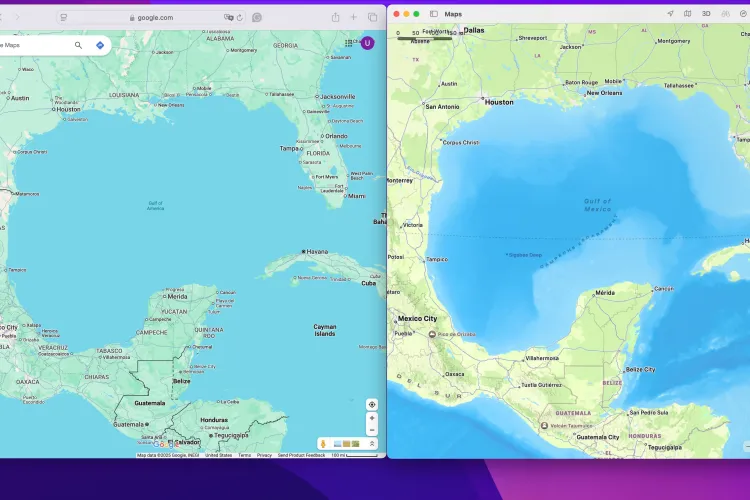Google has officially renamed the Gulf of Mexico for US users.
In a striking move, Google Maps has officially changed the name of the “Gulf of Mexico” to the “Gulf of America”—at least for users accessing the platform from within the United States. The change, which is now visible across both web and mobile versions of Google Maps, follows an official renaming decree by the Trump administration earlier today.
Why the Name Change?
The rebranding of the Gulf comes after the U.S. government formally updated the official designation of the body of water that stretches from the eastern coast of Mexico to the Florida Panhandle. Google, known for adhering to official geographic databases, has implemented the change in accordance with the Geographic Names Information System (GNIS), the official repository of U.S. location data.
This update means that American users searching for or viewing maps of the Gulf will now see the name “Gulf of America” displayed prominently. Meanwhile, users in Mexico will continue to see “Gulf of Mexico,” and international users will see both names, with “Gulf of America” appearing in parentheses alongside the original designation.
How Google Determines Which Name You See
Google Maps dynamically adjusts the display name based on user location, leveraging data from multiple sources, including mobile operating systems, SIM card information, and network providers. For desktop users, the displayed name will depend on search settings and location preferences if manually provided. This means that a U.S. traveler in another country may still see “Gulf of Mexico” unless they adjust their Google settings accordingly.
How Other Mapping Services Are Responding
Despite Google Maps’ swift adoption of the new name, other major mapping services have not yet followed suit. Apple Maps, for example, still recognizes only “Gulf of Mexico” and even redirects searches for “Gulf of America” back to the original name. Meanwhile, MapQuest and other platforms have not made any alterations to their geographic labels.

Interestingly, Waze—Google’s own community-driven navigation app—has adopted a mixed approach. Searching for “Gulf of Mexico” on Waze will return results that include both names, but searching for “Gulf of America” yields no results at all. This discrepancy suggests that Google is still refining its approach across its various navigation and mapping products.
Public Reaction and Implications
As expected, the change has sparked discussions and debates across social media and political circles. Proponents argue that the name “Gulf of America” strengthens national identity and aligns with recent U.S. policies aimed at reinforcing sovereignty and influence over geographical nomenclature. Critics, however, view the move as an unnecessary and politically motivated rebranding that disregards historical and cultural ties associated with the original name.
From a practical standpoint, the renaming could have broader implications for cartography, academia, and even international diplomacy. If other global mapping services eventually adopt the change, it may reshape how the body of water is referenced in textbooks, official documents, and news reports.
Will This Change Be Permanent?
Whether this alteration to Google Maps will stand the test of time remains uncertain. Given that Google follows government-recognized databases, future administrations could reverse the decision, leading Google and other platforms to revert to “Gulf of Mexico.” For now, U.S.-based users will have to adjust to seeing the “Gulf of America” on their digital maps.
As the situation continues to evolve, it will be interesting to see whether other companies—including Apple, Microsoft, and OpenStreetMap—eventually follow Google’s lead or stick with the historical name. Regardless of the outcome, this development highlights the powerful role that digital mapping services play in shaping public perception and geopolitical narratives.
Stay Updated
For the latest updates on digital mapping changes, geopolitical developments, and technology news, keep an eye on our blog. Let us know in the comments—what do you think about the name change? Should the “Gulf of America” become the new standard, or should the traditional “Gulf of Mexico” remain?










